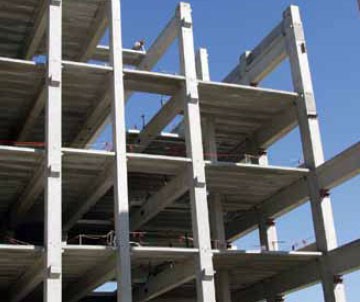Have you ever been in a hotel room in the U.S. and noticed that there are lights in just about every place you can imagine…on the dresser, nightstands and desk, maybe a floor lamp or wall sconce or two…but rarely do you find ceiling lamps? There’s a reason for that. Read on…
As a general rule of thumb, ceiling lights give off more light than lamps that stand on the floor or a table/desk. They’re higher up, so their light can spread further. Yet you’ll usually find hotel rooms with 4 or more lamps, while one ceiling lamp could often provide the same amount of light as all of them (and granted, nightstand and desk lamps are specifically there for close-up light needs. But you know what I’m saying…)
So why is it?
Cost, of course.
Many years ago, builders lobbied for an electrical code change that would allow the light switch to be connected to a receptacle instead of an overhead light. This saved them the cost of running wire to a ceiling box, putting drywall around it, and fitting an overhead light. The cost of making some receptacles switches is next-to-nothing in comparison since receptacles are already required by code. Anyway, this reasoning is especially true when many hotels, especially chains, use prefab or poured concrete slab construction methods, which would make fitting a ceiling light even more difficult. You’ll notice the same situation with many modern-day apartment complexes.

Of course, there are some exceptions. Older buildings, built before the new code, may have ceiling lights. Some places (especially fancy, expensive ones) might be willing to spend the extra money for ceiling lights so their clients can have a better (and brighter) hotel experience. Bathrooms usually have ceiling lights (or at least sconces that are high up), and kitchens in suites or extended stay places often do, too. But both of those areas have running water and code requires lighting in those areas to be appropriate for damp locations. My guess is that overhead lamps are just easier in those areas (and let’s face it – you need good lighting in the bathroom and kitchen).
All those reasons, and yet the Hyatt Centric Key West Resort and Spa manages to have this in the closet…
Oh, and the fact that it’s impossible for hotel guests to know which outlet(s) is/are connected to the switch(es) in the hotel room? Too bad, so sad ;-). Just make sure that when you go to charge your phone, you’re using an outlet that will still be “live” when you shut the switch at the end of the night. Well, or use the lamps’ respective on & off switches instead of the wall switch. Or just use the USB port. 😉
Want to comment on this post? Great! Read this first to help ensure it gets approved.
Want to sponsor a post, write something for Your Mileage May Vary or put ads on our site? Click here for more info.
Like this post? Please share it! We have plenty more just like it and would love it if you decided to hang around and sign up to get emailed notifications of when we post.
Whether you’ve read our articles before or this is the first time you’re stopping by, we’re really glad you’re here and hope you come back to visit again!
This post first appeared on Your Mileage May Vary

3 comments
I think many people would counter that by saying wall and desk lamps are way too dark for a fairly large space such as a hotel room. But that’s why our blog is called “Your Mileage May Vary.” 😉
I’m not disagreeing…but I don’t think that was one of their motivations 😉
There are plenty of really good ceiling lights that diffuse the light quite well (such as the open-dish light fixture I have. Using two bulbs also helps, as it offsets the shadows. Please note that I have a white popcorn ceiling, which, while super ugly and dated, does help with diffusion). They have the advantage of being very simple, not taking up floor or wall space, and being permanently attached (I’ve knocked lamps over countless times before). They often more energy efficient, too
Disadvantages include being harder to change the bulbs (they’re higher up, after all) and not great for setting a mood. The typical position (right at the center of the room) also puts the light at a not-ideal angle in certain positions.
For me, the ideal setup would be some wall sconces (like overhead lights, they’re permanently attached) and a central overhead light, switched separately, with one set (preferably the wall sconces) on a three-way (one by the door, and one where the installers expect the bed to go). Sadly, my current bedroom just has the one ceiling light on a single pole switch.